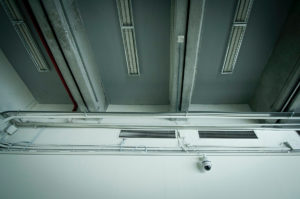ADT Dearborne Heights, Michigan
Reasons to Consider an Alarm System If You Live in Dearborn Heights
Dearborn Heights attracts people who want to live somewhere near Detroit, Michigan with a lower than average unemployment rate and cost of living. Although not every homeowner needs or wants an alarm system, people living in certain areas may want to consider one due to a higher than average crime rate overall or higher than average burglary rate in their area. Those in Dearborn Heights, for example, should take into consideration the crime rate and the safety of their neighborhood before deciding to forgo this type of added protection.
Overall Crime Rate
In an article rating the top 50 safest cities in Michigan, Dearborn Heights ranked 46th. Each year, there are about 20.88 crimes per 1,000 residents in city. This means that the crime rate is about 14 percent lower than the national average, making Dearborn Heights safer than approximately 32 percent of the other cities in the country. Even better, crime decreased by 3 percent between 2014 and 2015. This still makes it so residents have a 1 in 41 chance of becoming the victim of some sort of crime in any given year, however. Because the city crams about 57,774 people into just over 12 square miles, the number of crimes per square mile each year is way above the national average of 32 crimes per square mile and the Michigan average of 28 crimes per square mile at 119 crimes per square mile.
Violent Crime Rate
The violent crime rate in Dearborn Heights is just a bit above the national average at 3.95 compared to 3.8. The city has a higher than average amount of assaults, but lower than average rates of murder, rape and robbery. A resident of the city has a 1 in 253 chance of becoming a victim of some type of violent crime during any given year.
Property Crime Rate
The property crime rate of 20.88 crimes per 1,000 residents per year is actually lower than the national average of 24.9 crimes per 1,000 residents. However, the burglary rate is higher than the national average as is the motor vehicle theft rate. A resident of Dearborn Heights has a 1 in 48 chance of becoming a victim of some type of property crime during any given year. Out of all crime in the city, 46 percent consists of thefts and a further 23 percent consists of burglaries. Simply getting a monitored alarm system and posting the signs that state you have one can make you about 33 percent less likely to be the victim of a burglary because most burglars will be likely to move on to an easier target. Other steps you can take include getting a dog, installing lights on motion sensors by all doors and making sure to lock all doors and windows and close the garage door. Approximately 30 percent of burglars enter through an open door or window, so it pays to make sure everything is secure before leaving the house.
Safest Areas
Within any given city, there are some areas that are safer than others and some that are not so safe. In the case of Dearborn Heights, the safer neighborhoods include Inkster Road/Doxtator Street, Edward N. Hines Drive/North Beech Daly Road and Edward N Hines Drive/Warendale. One neighborhood best avoided when it comes to locating your house would be Annapolis Street/Fellrath Street, as this is one of the neighborhoods that’s the least safe in the city. People who would like to live somewhere near the city while enjoying life in another city with a lower crime rate may want to consider moving to Garden City, Allen Park or Westland. However, avoid Inkster, Melvindale, Taylor and Wayne, all of which have significantly higher crime rates.
Police Presence
There are 78 police officers and 17 civilian employees of the Dearborn Heights police department. This makes it so there are about 1.4 police officers per 1,000 residents, which is lower than the Michigan average of 2.1 officers per 1,000 residents and the national average of 3.3 officers per 1,000 residents. This lower than average ratio of police officers to residents may be affecting the ability of the officers to respond quickly to emergency calls and solve crimes. This is reflected in the case clearance rates for the police department. The overall clearance rate is 15 percent, compared to a national average of 28 percent. When it comes to burglaries, the clearance rate is just 5 percent, compared to a national average of 12 percent. Getting the right type of security system could make it more likely that police will be able to solve any potential burglary in your home. Look for one that takes a video clip whenever the alarm goes off so that any alarm reported to the police will have been video verified, as this moves the call up to be a higher priority and makes it more likely the police will arrive quickly, potentially catching the burglars in the act. It also provides video evidence to use to catch and prosecute the perpetrator even if they don’t catch him in the act.
Alarm Considerations

Should you decide to get a burglar alarm or security system while living in the city, the code of ordinances requires you to register it with the police department within 14 days. At this time, there’s no registration fee. However, there may be a fine if you have more than three false alarms per year, as this is considered a Class D municipal civil infraction.
